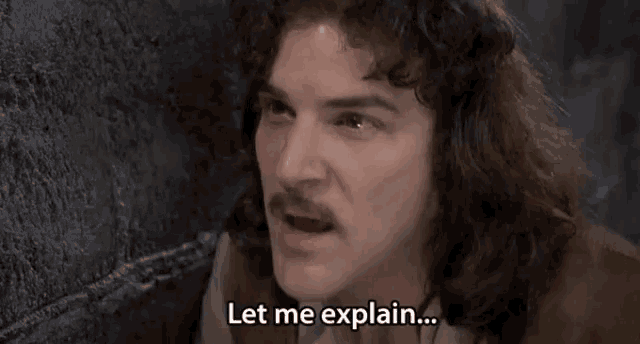can understanding basic physics make you a better marketer?
yes. yes, it can.
To be blunt, you should study anything that helps you understand how the human mind works. Especially as a marketer, we need to know how people think so we can better motivate their behavior. This includes physics, which describes how humans view the universe.
For me, I draw inspiration from all forms of science and thought. But when it comes to physics, I get the most geeky. And not because I can use physics to create better marketing (well, I do), but because I use physics concepts as a metaphor with my teams.
let me explain...no, there is too much; let me sum up
So, let's start with physics. What is it in the first place? This video does a job of explaining what physics does in simple terms, especially from the top - physics is concerned with "how" - how things work. The best part, for my purposes, is that physics offers concrete universals - that is, once something in physics is proven, it doesn't change.
If you are really interested, you can take one of many online courses to understand physics, but I am going to jump forward to the laws of thermodynamics and the conservation of energy, specifically the idea and nature of velocity—the rate and direction of motion.
That definition rocks because it describes marketing! It makes sense if you think of how we do marketing, our processes, systems, or whatever. You have a fixed place you are starting from; you have an idea of where you want to be (goals anyone?); you then create strategies that move you from where you are to where you want to be. Your velocity as a marketer (or marketing team) is how fast you are moving in the direction you intend to move.
Now, this is where I get excited because I firmly believe that to be the most effective marketers we can be, we must increase the velocity of our marketing.
now, physics
If velocity is the measure of rate and distance in a specific direction, and you want to increase your velocity, what do you do? Simple, you go faster - and to do that, you either need to accelerate (increase your rate of movement) or mitigate resistance.
When my son was a scout, we did the Pine Wood Derby yearly. The cars that do best are not necessarily the fastest out of the gate. The course changes and a car that is fast down the hill may not be able to maintain velocity to the end. But cars that can both accelerate toward the bottom of the hill and mitigate resistance do the best.
That sounds like every marketing team I have been a part of. Effective marketers find a way to compound what they do and remove barriers to success. They understand limitations, embrace them, and exploit them (more on that one soon).
In physics, three forces cause resistance to velocity: gravity, drag, and friction. Gravity, in as simple as I can make it terms, is the pull inward of a larger thing on a smaller thing - like the pull downward to the center of the Earth. So on Earth, everything that moves is resisted by Gravity. Drag is the combined effect of forces in the opposite direction of an object as it moves. Think of this as wind resistance for a car or plane. Friction is the transfer of energy from a moving object to a stationary object as they rub together, think tires on the ground. All three can slow you down (but all three can also be useful).
For most businesses, the inward pull of gravity can be described as business processes and bureaucracy that limit what can be done. Most often, marketers can do precious little to change that.
But we can do a great deal to mitigate the other two - drag and friction. Drag can be eliminated by operating in a vacuum - I mean, in space, it doesn't matter what your ship looks like; there is no drag.
just ask the Borg
But since none of us can operate in a vacuum, like cars and planes, we need to improve our aerodynamics to reduce drag. That means creating simpler and better marketing processes (more on this one later).
Lubricant is a great way to mitigate friction in cars. If you want to reduce friction in a car, use better engine oil, grease on your gears, and better tires. For the marketer, friction often occurs when industry best practices run afoul of organizational ability, budget, or process. My advice here is to look for the paths of least resistance in your organization (but don't compromise your integrity).
Listen, this is not a perfect metaphor, but it works. I use physics to understand and communicate the challenges I face because it offers specific solutions with no guesswork. And if it works for me, it will work for everyone, right?



